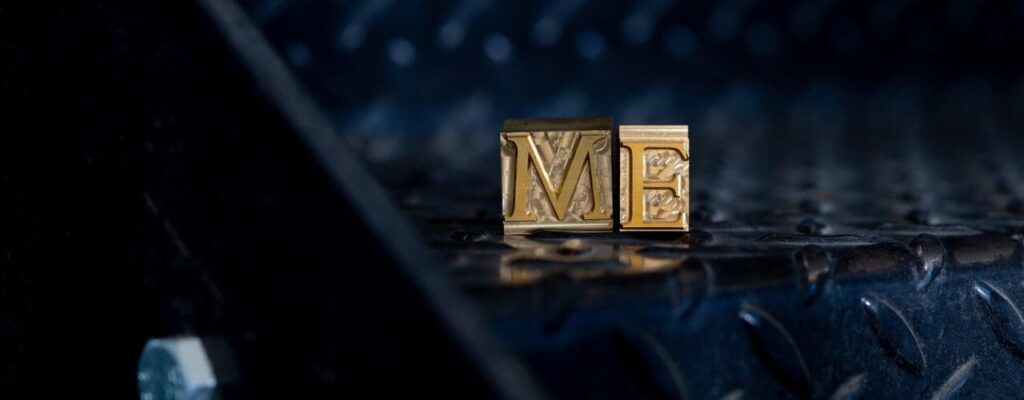

Cleaning your polymer letterpress plates is essential for several reasons. Residual ink and debris can affect the quality of your prints, leading to inconsistencies and unwanted marks. Additionally, proper cleaning helps to preserve the plates’ surface, preventing damage that could shorten their lifespan. Regular cleaning ensures that your plates remain effective and produce the sharp, detailed prints that letterpress printing is known for.
Storing Polymer Letterpress Plates
Proper storage of polymer letterpress plates is crucial for maintaining their quality and extending their lifespan. We always recommend storing polymer plates in a constant humidity environment, ideally between 50% and 60%. Avoid extreme fluctuations in humidity, as this can cause the plates to warp or degrade.
For your exposed plates, store them in a zip-lock bag to maintain constant humidity. This helps to protect the plates from dust and moisture. Additionally, keep your plates away from ultraviolet light, which can crack the surface. Store them in a drawer or cabinet to shield them from light exposure. Unexposed polymer plates should be stored in a black light-blocking bag that is taped shut. This prevents any accidental exposure to light, which can affect the plate’s sensitivity and performance. Ensure that the bag is sealed properly to provide maximum protection.
Materials Needed for Cleaning
Before you begin the cleaning process, gather the necessary materials. You’ll need:
- Mild dish soap or a specialised plate cleaner
- Soft, lint-free cloths or paper towels
- Soft-bristled brush (optional)
- Water
- A flat, clean surface for drying
Step-by-Step Guide to Cleaning Polymer Letterpress Plates
Step 1: Remove Excess Ink
After printing, immediately remove excess ink from the polymer letterpress plates. Use a soft, lint-free cloth or paper towel to gently wipe away the bulk of the ink. Avoid using abrasive materials that could scratch the plate surface.
Step 2: Prepare the Cleaning Solution
Mix a small amount of mild dish soap with warm water to create a gentle cleaning solution. Alternatively, you can use a specialised plate cleaner designed for polymer letterpress plates. Ensure the solution is not too harsh, as strong chemicals can damage the plates.
Step 3: Clean the Plates
Dip a soft, lint-free cloth or a soft-bristled brush into the cleaning solution. Gently scrub the surface of the polymer letterpress plates, focusing on areas with residual ink. Use circular motions to lift the ink without applying excessive pressure. Be thorough but gentle to avoid damaging the plate.
Step 4: Rinse with Water
Once the ink is removed, rinse the plates thoroughly with clean water to remove any soap residue. Ensure that all cleaning solution is washed away, as leftover soap can affect future prints.
Step 5: Dry the Plates
Place the cleaned plates on a flat, clean surface to air dry. Alternatively, you can use a soft, lint-free cloth to pat them dry. Ensure the plates are completely dry before storing or using them again to prevent any moisture-related issues.
Tips for Maintaining Polymer Letterpress Plates
Make it a habit to clean your polymer letterpress plates after each use. This prevents ink buildup and makes the cleaning process easier and more effective. When cleaning, try stick to mild dish soap or specialised plate cleaners. Harsh chemicals can deteriorate the polymer material, reducing the plate’s lifespan and print quality. Handle the plates with care to avoid bending or scratching. Always use soft cloths or brushes for cleaning and avoid abrasive materials.
And! As mentioned above, remember the importance of proper storage.
Troubleshooting Common Issues
- Ink Residue
If ink residue remains on the plates after cleaning, repeat the cleaning process with a slightly stronger solution. Ensure you rinse thoroughly to remove all cleaning agents. - Stubborn Stains
For stubborn stains, allow the cleaning solution to sit on the plate for a few minutes before scrubbing gently. Avoid using excessive force, as this can damage the plate. - Warping
If you notice warping, ensure the plates are stored flat and not exposed to heat or direct sunlight. Warped plates can affect print quality and, if severely damaged, may need to be replaced.
Keep Your Polymer Letterpress Plates in Top Shape
Cleaning your polymer letterpress plates is a crucial part of the printing process. Regular maintenance not only preserves the integrity of your plates but also enhances the overall quality of your letterpress projects. So, take the time to clean and care for your polymer letterpress plates properly, and enjoy the beautiful, detailed prints they produce.
For high-quality polymer letterpress plates that are easy to clean and maintain, visit our website to learn more about our products and place an order today.